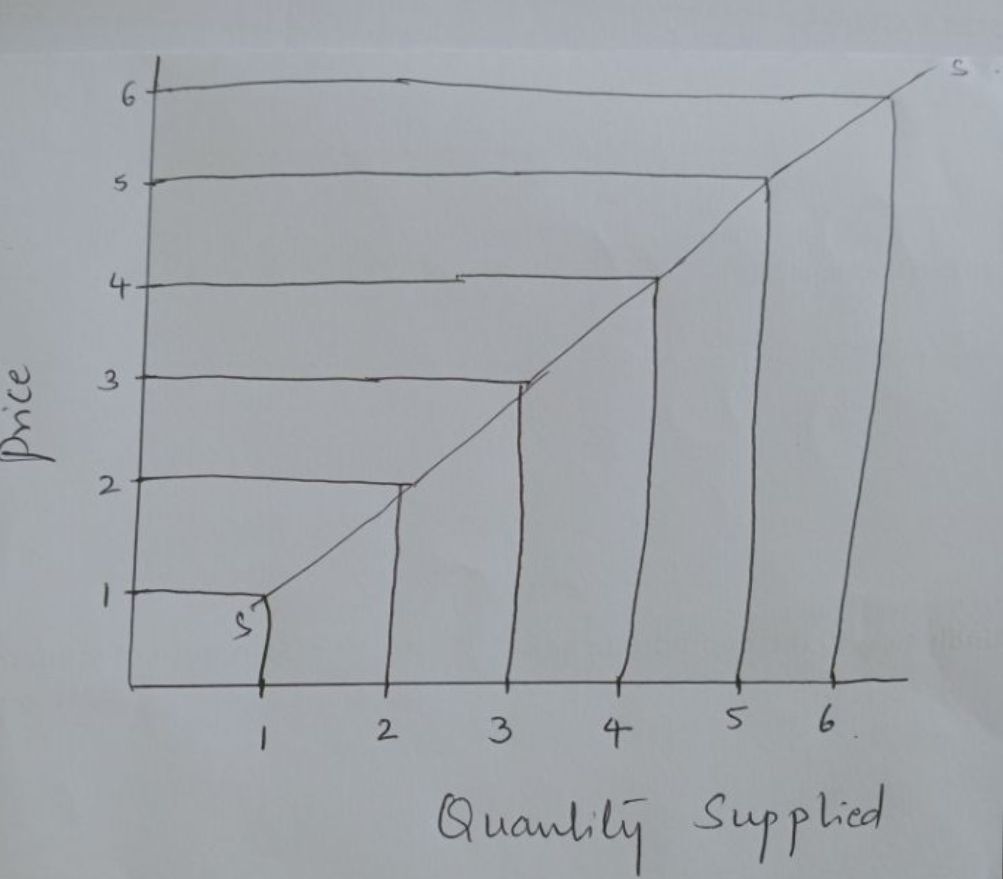law of supply: The term supply refers to the amount that is actually offered for sale in the market at a price per unit of time hence supply is a part of the stock. Supply has all the attributes of demand a seller can sell a commodity when he has the ability and willingness to sell. Supply is always at a price without referring to the price supply has no meaning. Supply is always express in terms of specific quantity and it is held supply is relative to a person, place and time. Supply may be defined as” how much of goods will be offered for sale at a given time” according to professors, supply may be defined as a schedule which shows the various amount of a product which a producer is willing to and able to produce and make available for sale in the market at each specific price in a set of possible price during some given period.
Law of Supply.
The law of supply is just the reverse of the law of demand normally a seller supply more units of a commodity at higher prices and vice versa. given the cost of production, profits are likely to be high at higher prices. Higher the prices the greater is the inducement to the producer to produce and sell more and appropriate more profit, hence more quantity supplied at higher prices and less is supplied to lower prices. This relationship between the price and quantity supplied is popularly known as the law of supply. It’s states that “other things remaining constant the quantity supplied varies directly with the price that is when the price falls supply will contract and when the price rises supply will extent”.
Mathematically S=f (p) it indicates the general tendency on the part of seller. It does not have universal validity it is conditional in nature that other things that should remind constant when we study law of supply.
Change in supply consequent upon change in price when represented in a tabular column constitutes a supply schedule. It represent a functional relationship between quantity supplied and price. It is strictly prepared with reference to the price of a given commodity, the following imaginary supplies schedule shows that, as price rises supply extends as price falls supply contracts. Supply schedule is never absolute, it varies with different prices and a different time.
| Price in rupees | Quantity supplied in units |
| 6.00 | 600 |
| 5.00 | 500 |
| 4.00 | 400 |
| 3.00 | 300 |
| 2.00 | 200 |
| 1.00 | 1.00 |

The supply curve is a geometrical representation of the supply schedule the upward sloping curve clearly indicates that as price rises quantity supplied expands and vice versa.
Features of Law of Supply
- Direct relation: There is a direct relationship between price and supply that is higher the price higher would be the supply and vice versa.
- Price is an independent variable and supply is a dependent variable in this case we analyze the effect of price on supply only
- Importance of the qualifying phrase: Other things being equal the applicability of the law are condition by the phrase other things being equal thus the law is not universal in nature.
- Qualitative statement: It tells us only the direction of change in price and supply but it does not indicate the qualitative changes in both price and demand
- Upward sloping curve: The supply curve normally slope upward from left to right.
also read: what is firm? explain the feature and importance of firm